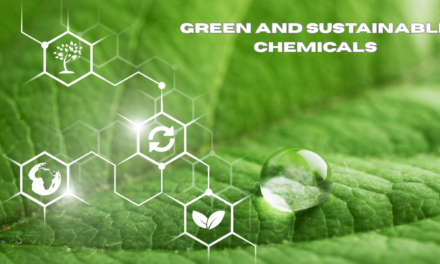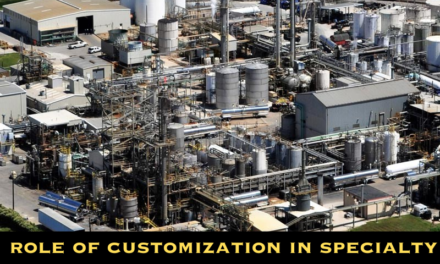Life Cycle Assessment (LCA) plays a crucial role in evaluating the sustainability of chemicals by providing a comprehensive, data-driven analysis of the environmental impacts of chemical products throughout their entire life cycle. LCA helps companies, policymakers, and consumers understand the holistic environmental impact of chemicals from production to disposal, enabling more informed decisions that support sustainability goals. Here’s how LCA contributes to the sustainability evaluation of chemicals:
1. Assessing Environmental Impacts
- Role: LCA evaluates the environmental impacts associated with a chemical throughout its life cycle, including raw material extraction, manufacturing, transportation, use, and end-of-life disposal. This includes various environmental indicators such as global warming potential (GWP), energy consumption, water usage, and toxicity to ecosystems.
- Impact: By identifying key stages where environmental impacts are highest, LCA allows companies to focus on reducing those impacts, such as using cleaner energy, reducing waste, or optimizing processes to be more resource-efficient.
2. Comparing Alternatives
- Role: LCA can be used to compare different chemicals, materials, or processes in terms of their sustainability. For example, it can compare the environmental impacts of bio-based chemicals vs. petroleum-based chemicals, or green solvents vs. conventional solvents.
- Impact: This comparison helps businesses make informed choices about which chemicals to produce or purchase based on their environmental performance, leading to the selection of more sustainable options.
3. Identifying Opportunities for Improvement
- Role: LCA identifies environmental hotspots—stages in the life cycle of a chemical that have the most significant environmental impacts. This can include energy-intensive production processes, high levels of waste generation, or unsustainable sourcing of raw materials.
- Impact: Once these hotspots are identified, companies can implement strategies to mitigate these impacts, such as reducing emissions, switching to renewable energy, or using more sustainable feedstocks, contributing to the overall sustainability of the chemical product.
4. Supporting Green Chemistry and Sustainable Innovation
- Role: LCA is a powerful tool for green chemistry and sustainable product design. It helps guide the development of eco-friendly chemicals by assessing the environmental consequences of various chemical processes and materials, and highlighting the potential benefits of sustainable innovations.
- Impact: By applying LCA early in the product development process, companies can design chemicals and processes that are more energy-efficient, resource-conserving, and less polluting, promoting innovation in sustainable chemistry.
5. Enhancing Transparency and Credibility
- Role: LCA provides a transparent, scientifically-based method for evaluating and communicating the environmental impacts of chemicals. It helps companies demonstrate the sustainability of their products to regulatory bodies, consumers, and investors.
- Impact: This enhances brand credibility and meets the increasing demand for sustainability reporting. It also aids in compliance with environmental regulations and certifications, such as ISO 14001 or Environmental Product Declarations (EPD).
6. Encouraging Circular Economy Practices
- Role: LCA helps assess the potential for recycling, reuse, or upcycling of chemical products, supporting the transition to a circular economy. It allows companies to evaluate the sustainability of a chemical product’s life cycle in a closed-loop system where waste is minimized, and materials are kept in use.
- Impact: By highlighting opportunities for circular practices, such as closed-loop recycling of chemicals or using renewable feedstocks, LCA helps drive the development of more sustainable business models.
7. Supporting Regulatory and Policy Decision-Making
- Role: Governments and regulatory bodies use LCA to assess the environmental impact of chemicals and inform the development of environmental policies and regulations. LCA helps ensure that chemicals are evaluated not only for their immediate use but for their long-term environmental impact.
- Impact: Policymakers can use LCA data to design regulations that promote the use of more sustainable chemicals, such as policies that favor green chemicals, low-carbon solutions, or eco-design principles.
8. Improving Consumer Choices
- Role: LCA can provide consumers with clearer insights into the environmental impacts of the products they purchase. Companies can use LCA to create eco-labels or environmental product declarations that give consumers a transparent view of a chemical’s environmental footprint.
- Impact: This empowers consumers to make more sustainable purchasing decisions, encouraging the demand for greener, more sustainable chemicals and driving market shifts toward sustainability.
9. Enabling Life Cycle Costing
- Role: LCA often integrates economic analysis with environmental impacts, helping to evaluate the life cycle cost (LCC) of chemicals. This considers not only the environmental costs but also the economic costs of production, use, and disposal.
- Impact: Life cycle costing helps businesses assess the full financial impact of a chemical, beyond just production costs, and can promote more cost-effective decisions that also support sustainability, such as reducing waste or energy use over the product’s lifetime.

















